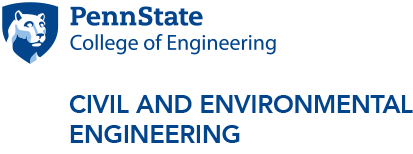Connectivity Between Landscapes & Riverscapes and Management
Abstract: Connectivity between landscapes & riverscapes and management: humid temperate headwaters
Humid temperate upland headwaters sustain rivers that provide vital sources of water and energy in many areas, as well as supporting important ecosystems and industry. Catchment hydrological responses are typically controlled by (near-) surface processes, resulting in flashy responses. In this talk, I’ll present studies highlighting the strong connectivity between landscapes and riverscapes in humid temperate regions and how this is affected by land and water management practices. I’ll also show examples of how this knowledge can be used to design nature-based solutions that restore or enhance the connectivity between landscapes and riverscapes, in particular to address flood and drought challenges. Even in these relatively water resource rich environments, water scarcity can occur during dry periods. I’ll end with a discussion of future work aiming to address important knowledge gaps, in particular the role of place and scale.
Biography: Dr Josie Geris is a Senior Lecturer in Hydrology at the School of Geosciences, University of Aberdeen. She holds a doctorate in Civil Engineering and Geosciences from Newcastle University, UK and a MSc degree in Ecohydrology and a BSc degree in Earth Sciences from the Vrije Universiteit, Amsterdam, Netherlands. Her research focusses on the effects of land use and land management on catchment processes and river flow at different scales. She is particularly interested in the interlinkages between soil, vegetation, and water, and how this knowledge can be used for designing flood and drought management strategies.
Dörthe Tetzlaff, IGB Leibniz Institute and Humboldt-Universität zu Berlin (Germany)
Abstract: Connectivity between landscapes & riverscapes and management: drought-sensitive lowland headwaters
It is widely recognised that the processes and connections in our landscapes are influencing the functioning of aquatic ecosystems. Fundamental scientific understanding of the functioning of both aquatic and terrestrial ecosystems is required for an integrated and sustainable management of landscapes and riverscapes to maintain their ecosystem services and biological integrity at multiple scales. This talk will show how the connectivity in ecohydrological systems can be quantitatively assessed through a number of novel, integrated approaches. It will show the need to understand the role of vegetation in regulating the connectivity between terrestrial and aquatic ecosystems. Environmental tracers are valuable tools to understand the functioning of ecohydrological systems at the landscape scale in terms of understand flow paths, sources of water and associated biogeochemical interactions. Extensive empirical studies were conducted to understand ecohydrological systems, and in particular, soil-vegetation-water connections. This empirically based understanding is then integrated into spatially distributed, tracer-aided models to understand mixing of water, flows to the stream and water age distribution at the catchment scale. We use the physically-based, distributed tracer-aided ecohydrologic model (EcH2O-ISO) which we have extended to track 2H and 18O (including fractionation processes) and water age. EcH2O-ISO combines a hydrologic scheme with an explicit representation of plant growth and phenology while resolving the energy balance across the soil-vegetation-atmosphere continuum. We also implemented isotope routing, mixing and fractionation (and used flux tracking for mean water age calculation). This tracer-aided modelling allows us to simulate different ecohydrological fluxes, quantify their ages and investigate storage and mixing dynamics in catchments. It also allows to visual spatial and temporal dynamics in connectivity. We found that blue water connectivity is important for groundwater / surface water interactions and a high sensitivity of fluxes and ages to land use cover in drought-prone lowland headwaters.
Biography: Dr Doerthe Tetzlaff is Professor of Ecohydrology at the Humboldt-Universität zu Berlin and Head of Department “Ecohydrology” at IGB Leibniz Institute of Freshwater Ecology and Inland Fisheries, Berlin, Germany. Doerthe is an expert in landscape ecohydrology, with her research focus on the critical question of how landscapes store and release water, and how landscapes and riverscapes are interconnected. She did her PhD in Hydrology at the University Freiburg Germany, and then worked as postdoc and assistant professor at the University of Aberdeen. She was promoted to Full Professor in Aberdeen in 2010. She moved to Berlin in 2017. In previous years, her research had a strong focus on high-latitude northern ecosystems. Following a recent move back to Germany, Tetzlaff re-focussed her research to ecohydrological investigations in the temperate biomes and hydroclimate of Central Europe and more anthropogenically influenced landscapes in rural and urban settings. Doerthe has made seminal contributions to understanding the physical processes that generate stream flow, the role of plants in water transport through catchments and the way these processes influence the hydrochemistry and hydroecology of streams. She is also well-known for her internationally leading work on tracer ecohydrology and tracer-aided modelling to tackle fundamental questions on the dynamics of storage, fluxes, and ages of water in catchments. Thus, her research has shaped our understanding of ecohydrological processes, which is critical to predicting climate change and land use change impacts on water resources. She has conducted ecohydrological studies worldwide—including Germany, Scotland, Canada, USA, Chile, Sweden, Russia —and her work has led directly to an array of new models and theories that have shaped and led the field of ecohydrology. She is also the Editor-in-Chief of Hydrological Processes, (one of the top ranking journals in the ISI Water Resources subject area, and the flagship journal in experimental hydrology). She is a Fellow of the American Geophysical Union (AGU), a Fellow of the Royal Society of Edinburgh RSE and Fellow of the Geological Society of America (GSA). Between 2013-2017, she was a member of the Royal Society of Edinburgh, Young Academy. She also serves on a number of prestigious international committees as an invited member.
Event Contact: Li Li



